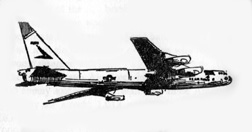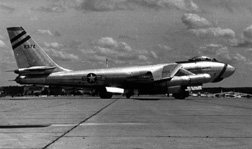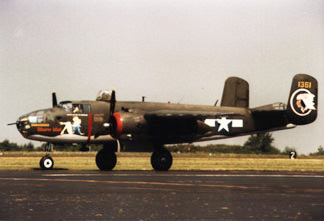 |
Qantas Gripe |
 |
||||||||||
|
Be it a military or civilian commercial air operation, there is a standing requirement that the air crew fill out specified forms that notify the ground maintenance crew of any mechanical discrepancies found during a flight just ended. While the Qantas information, published below, has a humorous theme, you may be assured filling out the ““”gripe s is serious business. At the end of this Qantas story I offer you some examples from my own military flight experience, in the event you may be interested. |
||||||||||||
 |
||||||||||||
 |
||||||||||||
|
If you would like to learn more about Qantas, click here.
|
||||||||||||
 |
||||||||||||
| After every flight, Qantas Airlines pilots fill out a form called a gripe sheet, which conveys to the mechanics problems encountered with the aircraft during the flight that need repair or correction. The mechanics read and correct the problem, and then respond in writing on the lower half of the form what remedial action was taken, and the pilot reviews the gripe sheets before the next flight. Never let it be said that ground crews and engineers lack a sense of humor.
Here are some supposedly actual logged maintenance complaints and problems as submitted by Qantas pilots and the solution as recorded by Qantas maintenance engineers. By the way, Qantas is the only major airline that has never had an accident. (P = The problem logged by the pilot.) P: Left inside main tyre almost needs replacement. P: Test flight OK, except auto-land very rough. P: Something loose in cockpit. P: Dead bugs on windshield. P: Autopilot in altitude-hold mode produces a 200 feet per minute descent. P: Evidence of leak on right main landing gear. P: DME volume unbelievably loud. P: Friction locks cause throttle levers to stick. P: IFF inoperative. P: Suspected crack in windshield. P: Number 3 engine missing. P: Aircraft handles funny. P: Mouse in cockpit. P: Noise coming from under instrument panel. Sounds like a midget pounding on something with a hammer. |
||||||||||||
|
I am sure that Qantas has a very accomplished maintenance system, or they would not have accrued the safety record they enjoy. In my own experience, things mechanical are not usually so humorous. Here are some examples from my personal experience. |
||||||||||||
| While flying B-47s out of Lincoln AFB, NE, in the mid-1950s, I had two experiences that relate to maintenance confusion. My crew was scheduled for a transition flight proficiency check in B-47 #2372, shown on the left here. We had a standardization check pilot riding with us. Cleared for takeoff, we poured on the coal and headed down the runway. It was soon apparent that | ||||||||||||
 |
||||||||||||
| something was amiss. The air pressure in the cockpit seemed to be getting heavier. By the time we attained lift-off speed, my Bomb/Navigator was screaming that his head was about to implode (he had chronic sinus trouble) and so was mine. As we lifted off, I flipped the gear lever up and decided to pull the cabin pressure dump valve handle. When I did so, we had explosive decompression and the cockpit was instantly zero visibility in condensation fog. I tried to keep my cool and concentrated on the instruments to keep us from plowing into the ground. The fog soon dissipated. We consulted with the check pilot and he agreed that we would continue the transition proficiency check unpressurized as we didn't have to go over 15,000 feet altitude to hit our scheduled tanker. The rest of the flight could be considered normal, but we were not used to flying the B-47 in an unpressusrized condition. Upon landing and finding our parking place, we wrote up the malfunction on the “gripe sheet,” discussed the problem with the crew chief and went into operations for our debriefing.
The next day we were scheduled for the bomb/nav check in the same aircraft. With our standardization board Bomb/Nav Instructor in tow, we go out to our aircraft for preflight. The crew chief explains that they discovered the pressurization control valve lever had been set in the wrong position, causing the deep sea dive effect on our takeoff roll. Preflight complete we load up, fire up and taxi out to the number one position awaiting takeoff clearance. It was a hot summer day and we sat there with the canopy in the open position to enjoy what fresh air we could find. When we were cleared to take the runway, I advanced the power (to get a heavy jet moving, it takes considerable power) to move out into takeoff position. As we began to roll, I reached over and moved the canopy control lever into the closed position. The instant the canopy sealed shut, my Bom/Nav crewmember began to scream. With my hand on the canopy control lever, I just instinctively moved the lever to the open position. (I could have and probably should have used the dump valve lever.) As the canopy lock pins moved to the unlocked position, the canopy blew itself right out of its tracks and ended up slightly askew, but still covering our heads. The Bom/Nav's screaming stopped immediately as I reversed course and taxied back to our parking place. We again made our entries in the “gripe sheet” and went back into operations. The next day we were again assigned the same aircraft, with a new canopy installed, and the embarrassed crew chief admitted they had reset the pressurization valve into yet another wrong position. Our standardization check was flown with no difficulty and to top it off, our Bom/Nav got a shack on his RBS bomb run. A happy ending. |
||||||||||||
| A year or so later, while still at Lincoln AFB, I was flying the Base Operations B-25, making administration and supply runs and giving flight checks to non-combat crew pilots, in addition to my Wing Staff Officer duties. The 98th BW Director of Operations, who must have been checked out in every Air Force aircraft ever built, asked me to fly with him on a run out to California. I told him I would be happy to go. Our first stop was at Ellsworth AFB, Rapid City, SD, with a night landing. |
||||||||||||
 |
||||||||||||
|
|
||||||||||||
| What we didn't know was that they had been working on the B-25's brake system and had, somehow or another, got something reversed. When we touched down, the left brake was somewhere between dragging and locked. With some fast foot and handwork, we got stopped while still on the runway. They towed the aircraft in and maintenance found the problem and, overnight, fixed it after we had properly filled out the “gripe sheet.” The rest of our trip was uneventful.
Some months later, I was scheduled to test hop one of the two base B-25s after some major engine maintenance had been accomplished. As we took off we did not know that one fuel line (it must have been a minor one) had not been fully connected. (Our typical preflight inspection would not reveal a problem of this sort.) We completed all of the test requirements without difficulty and came back into the traffic pattern for our landing, not realizing that some fuel was being pumped into the nacelle behind the engine. The B-25 has individual, open, exhaust stacks protruding around the full circle of the engine. As we flared out for the landing, the hot exhaust gas from the engine, set afire the fumes flowing out from the cowl flaps on the bottom side of the engine. With a great “WOOF!” the right engine nacelle burst into flame. We called the tower and said we were on fire and stopped on the runway as quickly as we could. The crew chief was first down the ladder and the copilot and I followed quickly behind. The copilot and I began to run from the fire. The crew chief, loyal and true to his baby (the B-25), had grabbed the fire extinguisher and was standing behind the engine, emptying the CO2 bottle into the flames. The copilot and I didn't want to be outdone and seeing the flames more diminished, went back to help. With the major fuel that had pooled in the bottom of the nacelle already burned away, the fire was less fierce, but very deadly so close to the main fuel tank. Soon the base fire department joined us with more fire bottles and the fire was subdued. Naturally we wrote it up on the “gripe sheet,” thankful that the packet of forms, the aircraft, itself, and the three of us had survived, unscathed. You can read the newspaper write-up on this event by clicking here with an easy return with your back button. The point being, there can be humor in the exchanges that go on between the flight crew and the ground crew as they communicate through the “gripe sheets,” as long as things don't get too complicated. Yet, it remains a serious business with serious responsibilities. Obviously Qantas seems to make a habit of doing the right thing at the right time, sometimes even with a bit of humor involved. |
||||||||||||
|
Return To or Home - Contact Us - Cold War Hist. - 91st SRS Hist. - Stardust 40 Mission Story |
||||||||||||